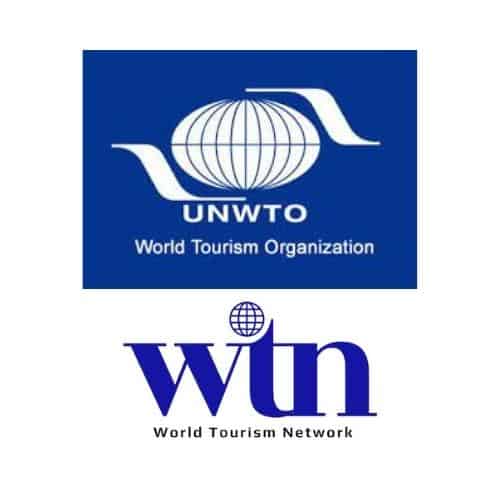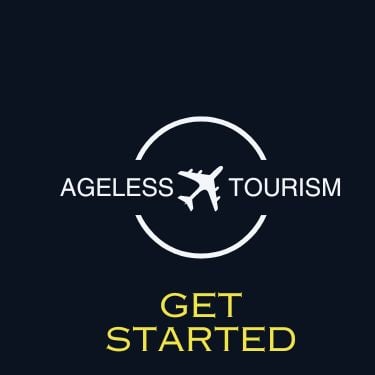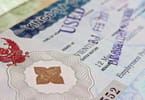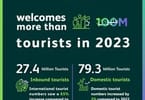Should UNWTO open a bottle of Don Perion about the latest UNWTO World Tourism Barometer flowery report on tourism recovery? World Tourism Network (WTN) President and safety security Expert Dr. Peter Tarlow will not yet join UNWTO Secretary-General Zurab Pololikashvili in this toast.
Dr. Peter Tarlow, WTN: “Wait a minute!”
According to the latest UNWTO World Tourism Barometer, international tourism saw a strong rebound in the first five months of 2022, with almost 250 million international arrivals recorded. This compares to 77 million arrivals from January to May 2021 and means that the sector has recovered almost half (46%) of pre-pandemic 2019 levels.
This is good news
Data provided by UNWTO in the just released UNWTO barometer underlines this enormous progress in the travel and tourism sector recovery.
Perhaps before opening the second bottle of Don Perion, watch out for a violent storm already thundering on the horizon. Uncertainty about this bright picture of a tourism rebound becomes more threatening by the day.
“The recovery of tourism has gathered pace in many parts of the world, weathering the challenges standing in its way,” said UNWTO Secretary-General Zurab Pololikashvili. At the same time, he also advises caution given the “economic headwinds and geopolitical challenges which could impact the sector in the remainder of 2022 and beyond”.
The secretary-general has a good reason to point this out. According to WTN, Record high inflation, the shifting of the US Dollar, a strong Ruble despite sanctions, the war in Ukraine and Russia, and a possible food and energy crisis can easily push the fragile travel and tourism industry into a dark corner. World Tourism Network is especially concerned about the medium and small-size businesses that could be once again hit by surprise.
Coronavirus is not finished but is stronger than ever, but no one wants to talk about it anymore. Everyone is tired of sitting at home in isolation and a widebody plane load of the dead in the United States on COVID-19 every day is no longer relevant.
And there is monkeypox? Is it just the gay man who should be worried about it? The reality is very different.
Europe and Americas lead recovery
Europe welcomed more than four times as many international arrivals as in the first five months of 2021 (+350%), boosted by strong intra-regional demand and the removal of all travel restrictions in many countries. The region saw a particularly robust performance in April (+458%), reflecting a busy Easter period. In the Americas, arrivals more than doubled (+112%). However, the strong rebound is measured against weak results in 2021, and arrivals remain 36% and 40% below 2019 levels in both regions, respectively.
The same pattern is seen across other regions. The strong growth in the Middle East (+157%) and Africa (+156%) remained 54% and 50% below 2019 levels, respectively, and Asia and the Pacific almost doubled arrivals (+94%). However, numbers were 90% below 2019, as some borders remained closed to non-essential travel. Here, the recent easing of restrictions shows improved results for April and May.
Several regions have recovered between 70% and 80% of their pre-pandemic levels, led by the Caribbean and Central America, followed by Southern Mediterranean, Western and Northern Europe. It is noteworthy that some destinations surpassed 2019 levels, including the US Virgin Islands, St. Maarten, the Republic of Moldova, Albania, Honduras, and Puerto Rico.
Tourism spending also rising.
Rising tourism spending from the major source markets is consistent with the observed recovery. International expenditure by tourists from France, Germany, Italy, and the United States is now at 70% to 85% of pre-pandemic levels. At the same time, spending from India, Saudi Arabia, and Qatar has already exceeded 2019 levels.
In terms of international tourism receipts earned in destinations, a growing number of countries – the Republic of Moldova, Serbia, Seychelles, Romania, North Macedonia, Saint Lucia, Bosnia & Herzegovina, Albania, Pakistan, Sudan, Türkiye, Bangladesh, El Salvador, Mexico, Croatia, and Portugal – have fully recovered their pre-pandemic levels.
Defying mounting challenges
Strong demand during the Northern Hemisphere summer season is expected to consolidate these positive results, particularly as more destinations ease or lift travel restrictions. As of 22 July, 62 destinations (of which 39 in Europe) had no COVID-19-related restrictions, and an increasing number of destinations in Asia have started to ease theirs.
According to the International Civil Aviation Organization (ICAO), the overall reduction in international air capacity in 2022 will be limited to 20% to 25% of airlines’ seats compared to 2019. Such resilience is also reflected in hotel occupancy rates. Based on data from the industry benchmarking firm STR, global occupancy rates climbed to 66% in June 2022, from 43% in January.
However, stronger than expected demand has created significant operational and workforce challenges. The war in Ukraine, rising inflation and interest rates, and fears of an economic slowdown, continue to pose a risk to recovery. The International Monetary Fund points to a global economic slowdown from 6.1% in 2021 to 3.2% in 2022 and 2.9% in 2023. At the same time, UNWTO continues to work closely with the World Health Organisation (WHO) to monitor the pandemic and emerging public health emergencies and their potential impact on travel.
Regional Scenarios for 2022
UNWTO’s forward-looking scenarios published in May 2022 point to international arrivals reaching 55% to 70% of pre-pandemic levels in 2022. Results depend on evolving circumstances, mostly changing travel restrictions, ongoing inflation, high energy prices, overall economic conditions, the evolution of the war in Ukraine, and the health situation related to the pandemic. More recent challenges such as staff shortages, severe airport congestion, flight delays, and cancellations could also impact international tourism numbers.
Scenarios by region show Europe and the Americas recording the best tourism results in 2022, while Asia and the Pacific is expected to lag due to more restrictive travel policies. International tourist arrivals in Europe could climb to 65% or 80% of 2019 levels in 2022, depending on various conditions, while in the Americas, they could reach 63% to 76% of those levels.
In Africa and the Middle East, arrivals could reach about 50% to 70% of pre-pandemic levels. In comparison, in Asia and the Pacific, they would remain at 30% of 2019 levels in the best-case scenario due to stricter policies and restrictions.
WHAT TO TAKE AWAY FROM THIS ARTICLE:
- According to WTN, Record high inflation, the shifting of the US Dollar, a strong Ruble despite sanctions, the war in Ukraine and Russia, and a possible food and energy crisis can easily push the fragile travel and tourism industry into a dark corner.
- Everyone is tired of sitting at home in isolation and a widebody plane load of the dead in the United States on COVID-19 every day is no longer relevant.
- At the same time, he also advises caution given the “economic headwinds and geopolitical challenges which could impact the sector in the remainder of 2022 and beyond”.























